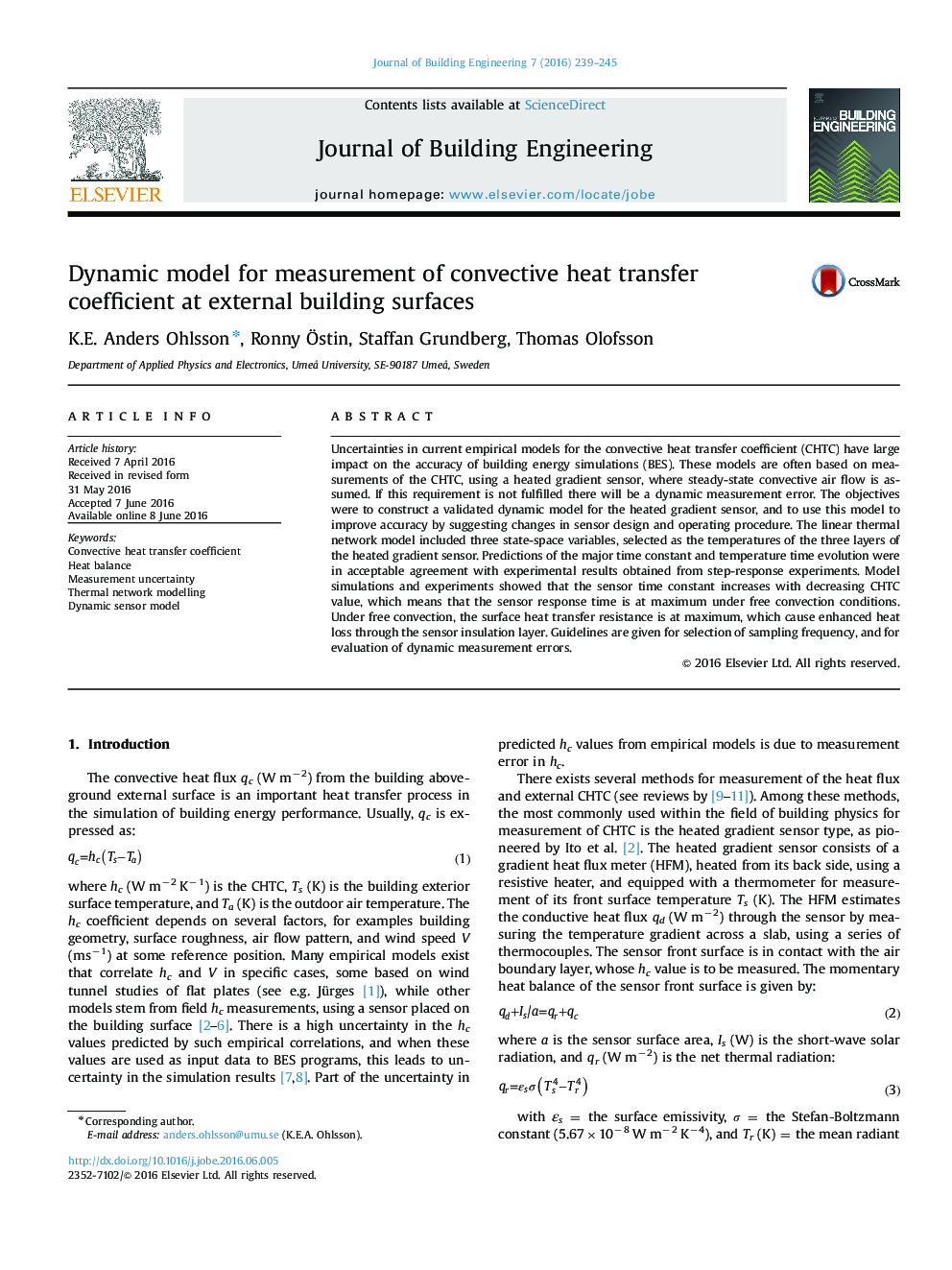| Article ID | Journal | Published Year | Pages | File Type |
|---|---|---|---|---|
| 283772 | Journal of Building Engineering | 2016 | 7 Pages |
•Convective heat transfer coefficient (CHTC) measured using heated gradient sensor.•Dynamic thermal network model of the heated gradient sensor was constructed.•Predicted time constant and temperature step response agreed with experiments.•Sensor time constant decreased with increasing CHTC value.•Model results allow evaluation of dynamic measurement errors.
Uncertainties in current empirical models for the convective heat transfer coefficient (CHTC) have large impact on the accuracy of building energy simulations (BES). These models are often based on measurements of the CHTC, using a heated gradient sensor, where steady-state convective air flow is assumed. If this requirement is not fulfilled there will be a dynamic measurement error. The objectives were to construct a validated dynamic model for the heated gradient sensor, and to use this model to improve accuracy by suggesting changes in sensor design and operating procedure. The linear thermal network model included three state-space variables, selected as the temperatures of the three layers of the heated gradient sensor. Predictions of the major time constant and temperature time evolution were in acceptable agreement with experimental results obtained from step-response experiments. Model simulations and experiments showed that the sensor time constant increases with decreasing CHTC value, which means that the sensor response time is at maximum under free convection conditions. Under free convection, the surface heat transfer resistance is at maximum, which cause enhanced heat loss through the sensor insulation layer. Guidelines are given for selection of sampling frequency, and for evaluation of dynamic measurement errors.
